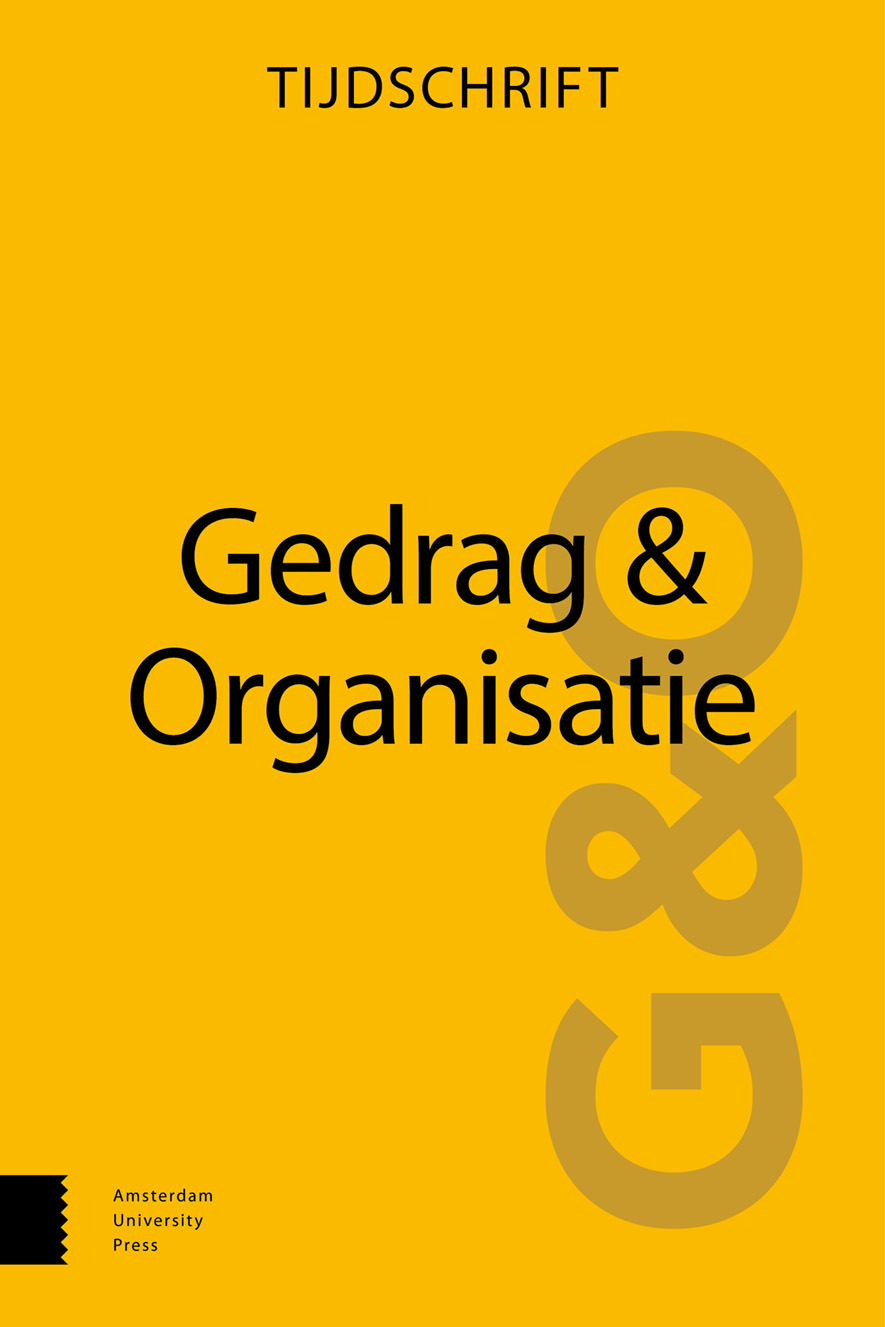- Home
- A-Z Publications
- Gedrag & Organisatie
- Previous Issues
- Volume 17, Issue 3, 2004
Gedrag & Organisatie - Volume 17, Issue 3, 2004
Volume 17, Issue 3, 2004
-
-
Redactioneel: De koers van Gedrag & Organisatie
More LessIn het vorige nummer van Gedrag & Organisatie gaf de redactievoorzitter Ben Emans, het estafettestokje van het hoofdredacteurschap van Gedrag & Organisatie door aan mij. De kern van zijn redactioneel was dat G&O een interessant Nederlandstalig wetenschappelijk tijdschrift moet zijn en blijven. Ik deel deze mening, en wil hier graag een bijdrage aan proberen te blijven leveren.
-
-
-
Consequenties van tijdelijk werk en baanonzekerheid in vier Europese landen
More LessConsequences of temporary work and job insecurity in four European countriesConsequences of temporary work and job insecurity in four European countries
Hans De Witte, Katharina Näswall, Antonio Chirumbolo, Sjoerd Goslinga, Johnny Hellgren & Magnus Sverke, Gedrag en Organisatie, volume 17, June 2004, nr. 3, pp. 163-186.
This contribution analyzes whether temporary work and (the subjective perception of) job insecurity are associated with a reduction in job satisfaction and organisational commitment, as suggested in the literature. Furthermore, an interaction between temporary work and job insecurity is tested. Data from four European countries (Belgium, the Netherlands, Italy and Sweden) are used to test the robustness of the hypotheses. Results show that temporary work is not associated with a reduction in job satisfaction and organisational commitment. Job insecurity, however, is associated with a lower score on both outcome variables, as hypothesized. In two countries, an interaction was found: job insecurity was associated with a reduction in job satisfaction and organisational commitment, though only among workers with a permanent contract. These results suggest a violation of the psychological contract for this specific category of workers.
-
-
-
Coördinatie tussen individuen en tussen teams: over het belang van inzicht in sociale dilemma's
More LessSamenvatting
Het om beurten accepteren van lagere uitkomsten om maximale gezamenlijke uitkomsten te halen, oftewel langetermijncoördinatie, werd onderzocht in een sociaal dilemma waarin wisselen het collectief en op den duur ook het eigenbelang dient. Eerder onderzoek naar individuen in coördinatiesituaties duidde op het streven naar kortetermijneigenbelang als belemmering voor langetermijncoördinatie. Het huidige onderzoek bestudeert de verschillen tussen individuen en tweepersoonsgroepen in coördinatiesituaties. Uit voorgaand onderzoek naar verschillen tussen groepen en individuen volgen tegenovergestelde voorspellingen. De één voorspelt een betere prestatie van groepen door hun cognitieve overwicht ten opzichte van individuen, de ander voorspelt een betere prestatie van individuen doordat deze minder geneigd zijn tot angst en hebzucht dan groepen. De resultaten van het huidige onderzoek geven voornamelijk steun voor de eerste verklaring. Tweetallen werden minder beïnvloed door de moeilijkheidsgraad van de structuur van de situatie dan individuen, omdat tweetallen meer begrip van de langetermijnstructuur van de situatie hebben.
-
-
-
Behoefte aan leiderschap in organisaties: wie heeft het en waarom?
More LessWho needs leadership in organizations and why?Who needs leadership in organizations and why?
Reinout E. de Vries, Robert A. Roe, Tharsi C.B. Taillieu & Nico J.M. Nelissen, Gedrag & Organisatie, Volume 17, June 2004, nr. 3, pp. 204-226.
Leadership literature most often deals with the leader and his/her effects on the performance and attitudes of employees. In contrast with these so-called leader-centred models, the follower-centred 'need for leadership' model focuses on the employee and his/her needs and wishes towards the leadership role. The model proposes that leadership effects are dependent on an employee's actual need for leadership. This article reviews the research on the effects of need for leadership on various individual and organizational leadership outcomes. Additionally, results of studies on the relative prevalence of various leadership needs – leadership functions that employees do and do not need – and predictors of need for leadership are presented. In particular, the article addresses the extent to which need for leadership is based on situational context or personal characteristics of the employee. Based on the findings presented here, the following is concluded: a) employees most strongly need a leader's 'connecting' function (to arrange things with higher management and to pass on information), b) leaders may have a different perception of employees' need for leadership than employees themselves, and c) need for leadership is mainly predicted by personal characteristics of employees, such as age, education, expertise and personality, and by the perceived style of the leader him-/herself.
-
Volumes & issues
-
Volume 38 (2025)
-
Volume 37 (2024)
-
Volume 36 (2023)
-
Volume 35 (2022)
-
Volume 34 (2021)
-
Volume 33 (2020)
-
Volume 32 (2019)
-
Volume 31 (2018)
-
Volume 30 (2017)
-
Volume 29 (2016)
-
Volume 28 (2015)
-
Volume 27 (2014)
-
Volume 26 (2013)
-
Volume 25 (2012)
-
Volume 24 (2011)
-
Volume 23 (2010)
-
Volume 22 (2009)
-
Volume 21 (2008)
-
Volume 20 (2007)
-
Volume 19 (2006)
-
Volume 18 (2005)
-
Volume 17 (2004)
Most Read This Month


